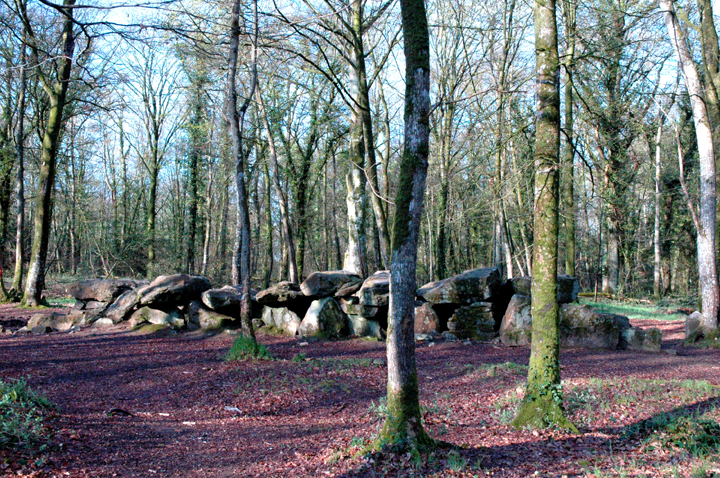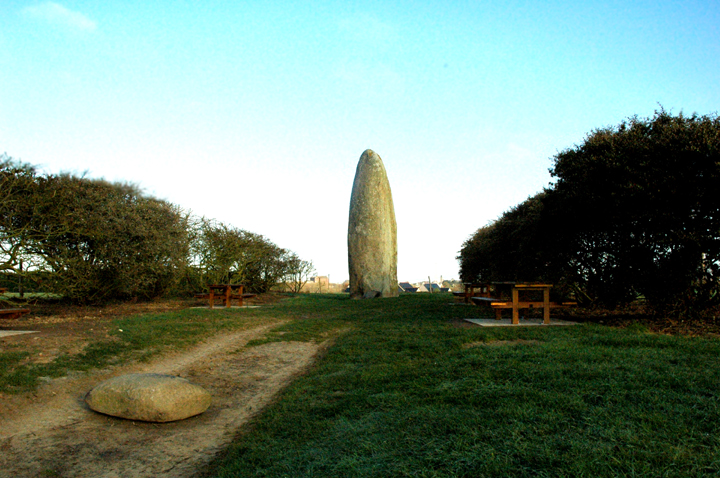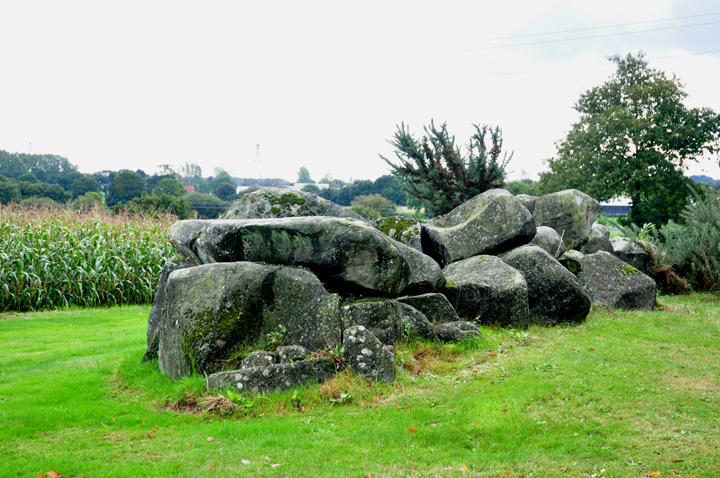












Tuesday 12 April 2005 Pano done with free beta version of Autostitch autostitch.net

Tuesday 12 April 2005 Pano done with free beta version of Autostitch autostitch.net






Tuesday 12 April 2005 The mound is kind of unphotographable as far as I can remember, but this view of the descent kind of gives an idea


Tuesday 12 April 2005 Note the way the capstones swing left with the curve of the allee-coudee


Tuesday 12 April 2005 Notice engraving on left and light at end from right as result of defining curve in allee-coudee

Tuesday 12 April 2005 Rare pic with me in! (Squeezing through initial entrance.) Le Grand Menir Brise in background.


Tuesday 12 April 2005 A ‘goddess’ head as in Barnenez & others?

Tuesday 12 April 2005 Not the most flattering view, but really gets across the colossalness of the thing














Access: Easy once you’ve navigated the maze of lanes in this area &/or the roundabouts coming out of Ploufragan. Right next to the road & there is room to stop.
Visited Wednesday 7 October 2009
Beautiful! We found it as much by luck as judgement as a result of our only map being a road atlas. It’s probably simple to reach from Ploufragan directly with a decent map, but we went spectacularly ‘round the houses’ (and industrial estates, shopping outlets, motorways, villages, suburbs....)
Coming straight from Ploufragan, you’d also pass Le Menhir du Sabot on a roundabout (not thrilling), another possible menhir (small) by the roundabout just before this site.
I found La Couëte & Grand Argantel particularly reminiscent of some of the hunebedden in the Netherlands.
Access: Looks easy but I’d guess it’s on private land & is so close to the farm buildings that I suspect asking first would be a good idea.
‘Visited’ Wednesday 7 October 2009: Saw this as we drove past but didn’t stop as time was extremely tight on our last day.
Seems to be a rather curiously-shaped large natural rock with a few possible orthostats ‘behind’ it. From photos, it looks more like Margot’s sunlounger than her bed....
Access: Unknown, as we did not find it. We had no real instructions on how to find it, but had we looked carefully at megalithes-breton.fr we probably wouldn’t have had any problems....
I’m sorry, I can’t find any way of linking directly to a site page on megalithes-breton.fr I can only sy look under Cotes d’Armor on the horizontal menu, then under Ploufragan.
Access: Easy to see as you round the roundabout! Traffic may be a problem for stopping or actually reaching the stone....
‘Visited’ Wednesday 7 October 2009
This is a small menhir (presumably) re-erected actually on the roundabout. It was difficult to stop & rather underwhelming despite having been split by lightning, so we didn’t get any photos.
There seemed to be another small menhir on the outside of the road around the roundabout, roughly to the east, but I can find no provenance for it.
Access: Easy once you’ve navigated the maze of lanes in this area &/or the roundabouts coming out of Ploufragan. Right next to the road & there is room to stop just up the hill on the opposite side of the road.
Visited Wednesday 7 October 2009
A little beauty! We found it as much by luck as judgement as a result of our only map being a road atlas. It’s probably simple to reach from Ploufragan directly with a decent map, but we went spectacularly ‘round the houses’ (and industrial estates, shopping outlets, motorways, villages, suburbs....)
Coming straight from Ploufragan, you’d also pass Le Menhir de Sabot on a roundabout (not thrilling), another possible menhir (small) by the roundabout & Allée couverte de la Couëte (beautiful) and Le Lit de Margot (a rock) just before this site.
Petit Argentel allee couverte is a little south of here, but all we knew was that it was down the hill.... Even ‘down the hill & take the first left’ looks like it would have allowed us to find it, going by Googlemaps.
I found Grand Argantel (& la Couëte) particularly reminiscent of some of the hunebedden in the Netherlands.
There are some ‘interesting’ big stones in the trees directly across road. These could just be field-clearance, but didn’t half look to me a bit like an extremely trashed allee couverte (or something). Notably, some of the more ‘significant-looking’ stones are well rooted in the ground.


